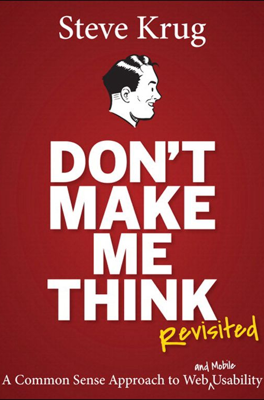Usability Testing on 10 Cents a Day
Usability testing is essential for understanding how real users interact with a website, yet many organizations neglect it due to perceived high costs and complexity. Steve Krug argues for keeping usability testing simple to ensure it is done frequently and effectively, even with restricted budgets.
Key Principles and Steps for Effective, Budget-Friendly Usability Testing
Don't wait until the end: Start testing early in the project lifecycle. Early testing can reveal functionality issues that might be costly to solve later.
Simplify the process: You don’t need an elaborate setup. A quiet room, basic screen sharing, and recording tools are sufficient. This approach reduces costs and facilitates more frequent testing.
Regular schedule: Conducting tests one morning each month can strike a good balance. It's often enough to catch major issues and ensure continuous improvement without being too disruptive.
Recruiting Participants
Recruit loosely: While it's ideal to test with users from your target audience, for many websites, significant usability issues will be evident even to those outside this group. If specificity complicates recruitment, broadening the criteria often yields still-valuable insights.
Use incentives effectively: Offering a slightly higher compensation for participants than the industry average can increase participation rates and show that you value their time.
The Testing Framework
Focus on critical tasks: Select tasks that reflect typical use cases and are crucial for user success on the website.
Think aloud protocol: Encourage users to verbalize their thoughts as they navigate tasks. This process provides deeper insight into their experiences and challenges.
Streamline observation: Utilize straightforward tools like GoToMeeting or WebEx for live observations and recordings, allowing team members who aren’t physically present to still participate.
Observing and Learning
Wide participation: Encourage as many team members as possible to observe tests. Direct exposure to user struggles can transform a team's approach to design and development.
Immediate debriefing: Discuss observations right after testing to capitalize on fresh insights. Prioritize issues based on their impact on user experience and assign fixes accordingly.
Cost-Effective Tools and Approaches
Remote testing: Consider remote usability tests to widen your pool of participants and reduce logistical barriers.
Unmoderated remote testing: Services like UserTesting.com offer a way to conduct usability tests with minimal effort on your part. They can be particularly useful for rapid insights.
Overcoming Objections and Making the Case for Testing
Address common objections: Preemptively tackle arguments against usability testing by highlighting its benefits and the modest requirements for conducting meaningful tests.
Showcase immediate value: Demonstrate the utility of usability testing through examples where early insights led to significant improvements or cost savings.
Conclusion
Regular, simplified usability testing is within reach for most projects and can provide critical insights that significantly enhance user experience. By integrating regular usability feedback loops, teams can make informed decisions that align with user needs, avoiding costly redesigns and enhancing overall product quality.
